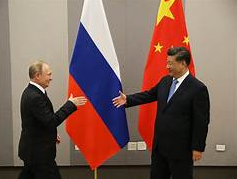China, Russia, North Korea, and Iran are all deeply hostile to the US and its allies – and they could coalesce into one big threat.
The current global climate is often described as exceptionally perilous, with rising tensions from key international players. Russia continues its aggressive war in Ukraine, threatening European security; China asserts its ambitions over Taiwan, warning of potential military action; Iran edges closer to acquiring nuclear capabilities, while also stirring conflict in the Middle East; and North Korea continues to develop weapons of mass destruction.
These countries, though not the only sources of instability, share two critical characteristics: a deep hostility toward the United States and its allies, and an increasing willingness to cooperate with each other. In particular, China, North Korea, and Iran have all become integral to Russia’s efforts in Ukraine, either through direct support or by bolstering Russia’s international position.
This growing alliance has taken on a more formal structure, with the countries engaging in frequent diplomatic meetings and issuing joint statements. In these communications, they present themselves as defenders of global order, positioning the West as the true disruptor of international peace and stability. Their collaboration is steadily evolving, and their collective antagonism toward the US and its allies represents a shifting geopolitical dynamic.
The possibility of this group coalescing into a more unified and powerful bloc poses a significant challenge to Western influence. Their shared opposition to US-led global norms and their combined efforts to challenge the existing international order could create a formidable threat. This new axis could be one of the most consequential geopolitical developments in the coming years.

